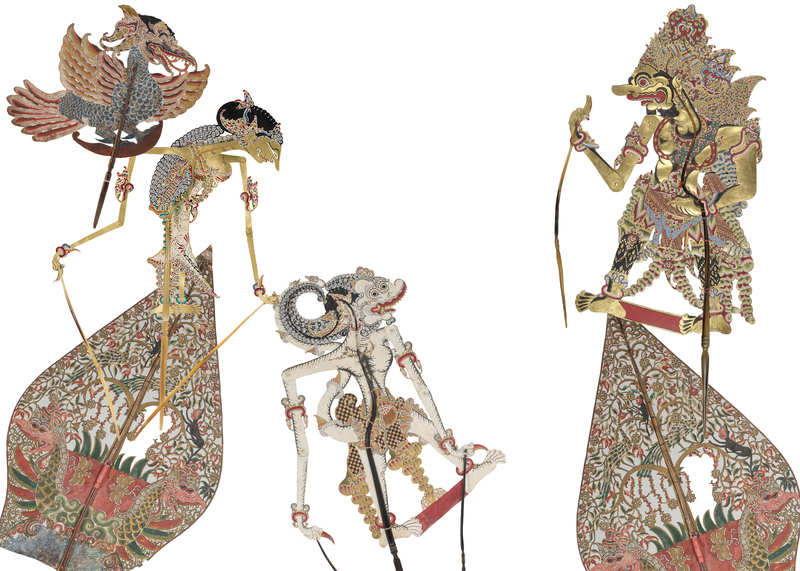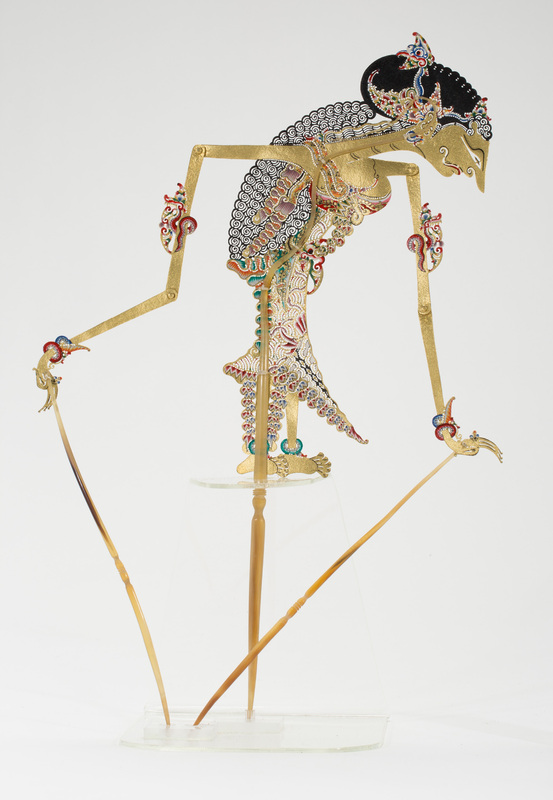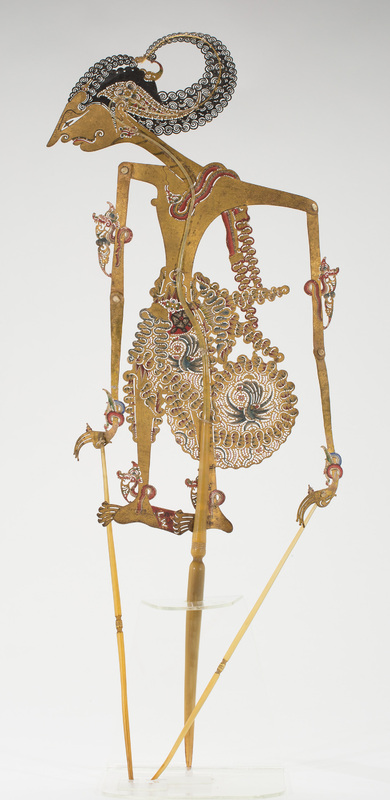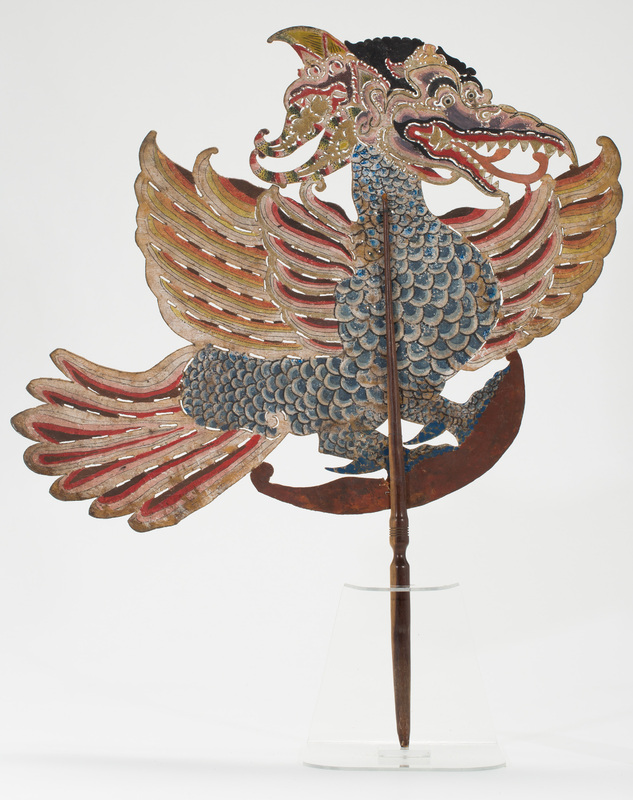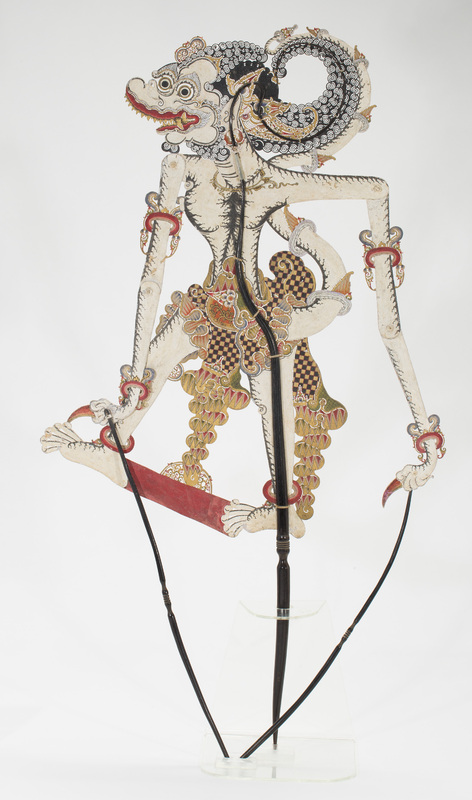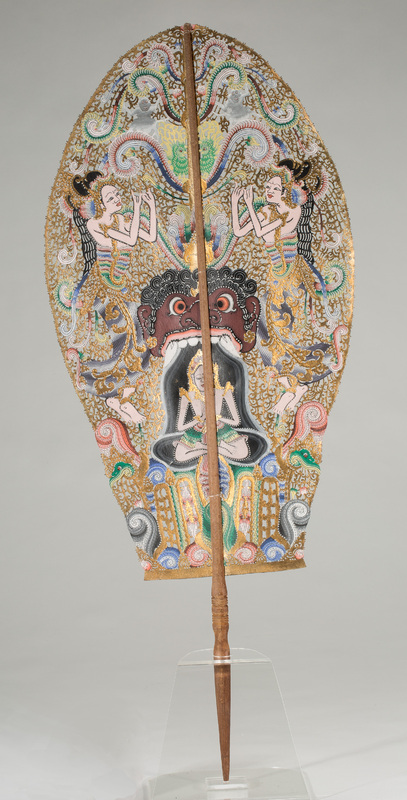Ramayana
The Ramayana is one of the classic wayang stories played across Java and Bali. The story of Rama’s journey and Sita’s bravery and devotion is one of the great inspirations that continue to inform artistic production in Southeast Asia. Rama’s battle against Rawwana with the help of Hanuman and his monkey armies is recorded in many forms, including in the Borobudur temple reliefs, Balinese story cloths, and contemporary popular media and television programs. The synopsis below is drawn from Claire Holt’s summaries of the story that she compiled in 1962.
Ascribed by Valmiki in 24,000 verses (sloka) that are divided into 500 songs, Ramayana tells a story of Rama, the incarnation of God Vishnu and the prince of the Kingdom of Ayodhya. Highly skilled in archery, Rama went to the court of King Janaka of Videhas, where he met the beautiful princess Sita who became his wife after Rama surpassed all his rivals in an archery contest. Due to the palace intrigue in his own kingdom, Rama was banished and went into exile, followed by Sita and his devoted brother Lakshmana.
During his exile, the demon king Rawwana abducted Sita wearing the guise of a begging Brahman as a revenge against Rama who wounded his sister, Surpanakha.
While Rawwana flew off with Sita, a brave bird, Jatayu tried in vain to stop him but failed and suffered a mortal wound. Before dying, however, Jatayu managed to tell Rama who then enlisted the help of Hanuman to find Sita in Alengka.
With the help of Hanuman and the monkey armies, Rama and Lakshmana crossed to Alengka by throwing boulders into sea as a causeway and wreaked havoc to the capital. Soon after, Rama engaged in a violent battle against Rawwana to save Sita and managed to slay him using the arrow he received from Saint Agastya. Even though Sita had been faithful to Rama as she resisted Rawwana’s many attempts to poison her, Rama still had his doubts and subjected Sita to an ordeal by fire to prove her stainless virtue.
When they all returned to Ayodhya, Rama decided to banish his wife even though she passed through fire due to public pressure. Sita went into exile in the forest-hermitage of the sage Valmiki where she gave birth to twins, Lava and Kusa. When the young boys came to the capital as Valmiki’s apprentices, Rama recognized them as his sons and pleaded Sita to return. Sita refused and decided to appeal to the Goddess of the Earth to receive her and she disappeared into the earth. For this reason, many Javanese and Balinese also associate Sita with the goddess of fertility and abundance.
Gifts and acquisitions from Claire Holt, Ben Anderson, and Joseph Fischer provided the museum with an almost complete set of characters in the Ramayana, except for Rama. Perhaps, he is still finding his way to cross the seven oceans in order to be with Sita at the Johnson Museum?
Next:
